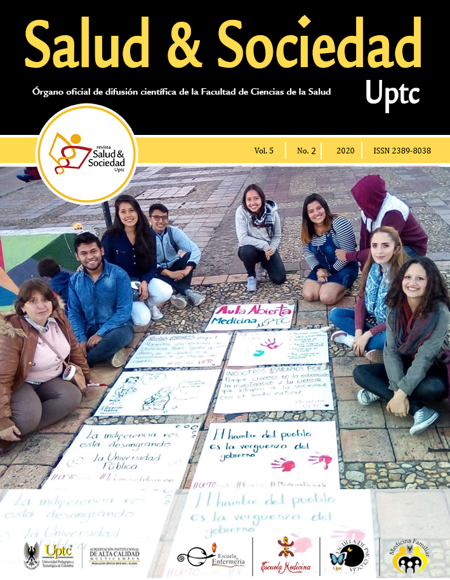The use of information and communication technologies in the scrennig of depression associated with psychoactive substance use

Abstract
Introduction: Currently SPA consumption disorders are considered as a chronic disease because the onset, course, direction, and outcome are not all predictable and additionally are many causes disorders such as depression; According to data reported by the addiction center of Barcelona reports that" the incidence of depression in patients with substance abuse is between 6% and 70%" in SPA consumers. With this outlook it must be understood that intervention must be integral where the emergence of information and communication technologies (ICTs) in health are vital for diagnosis, prevention, supervision, treatment. Objective: To determine the application of biomedical or computing in health in the early identification of depression associated with the use of psychoactive substances in adults in the locality of Chapinero by using of a previously validated ICT, during the year 2019.Methodology: Technological Research. METHOD: UWE Models. Results: With the development of this research proposal a proposal for the development of the prototype of TICs will be developed to implement the screening, without access to the internet for the early identification of depression and thus making clinical decisions in order to improve the decision making process, at the very moment of care, based on the recorded information called MEASDP.
Keywords: Psychoactive substances (SPA), depression, consumption, information and communication technology (ICT), medical informatics.
Keywords
Psychoactive substances (SPA), depression, consumption, information and communication technology (ICT), medical informatics
References
- Oficina de las Naciones Unidas contra la Droga y el Delito (UNODC) . (2017). Informe Mundial sobre las Drogas. Obtenido de https://www.unodc.org/wdr2017/field/WDR_Booklet1_Exsum_Spanish.pdf
- Bohnert, A. S., & Miech, R. A. (2010). Changes in the Association of Drug Use with Depressive Disorders in Recent Decades: The Case of Cocaine. Substance Use & Misuse, Vol. 45 Issue 10, p1452-1462. Obtenido de: https://www.ncbi.nlm.nih.gov/pmc/articles/PMC4109050/
- Centro de Adicciones y Tratamiento de Barcelona. (2008). Consumo de Drogas y Depresión. Revista de Toxicologia, 5-10. Obtenido de: https://www.cat-barcelona.com/ret/04/consumo-drogas-y-la-depresion/
- Gainza, I., Nogué, S., Martínez Velasco, C., Hoffman, R. S., Burillo-Putze, G., Dueñas, A., Gómez, J., & Pinillos, M. A. (2003). Intoxicación por drogas. Anales del Sistema Sanitario de Navarra, 26(Supl. 1), 99-128. Recuperado en 27 de octubre de 2020, de http://scielo.isciii.es/scielo.php?script=sci_arttext&pid=S1137-66272003000200006&lng=es&tlng=es
- Ludwig, M. (2015, Enero 15). UWE – UML-based Web Engineering. Recuperado de http://uwe.pst.ifi.lmu.de/teachingTutorialSpanish.html
- Universidad de Antioquia. (2015). Aprende en Línea Plataforma Academica para Investigación. Obtenido de http://aprendeenlinea.udea.edu.co/lms/investigacion/mod/page/view.php?id=3118